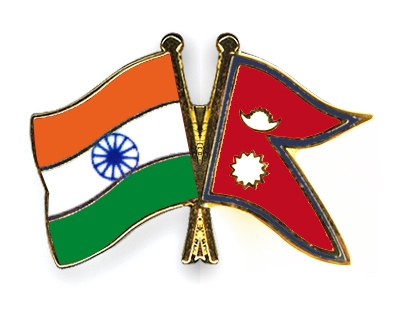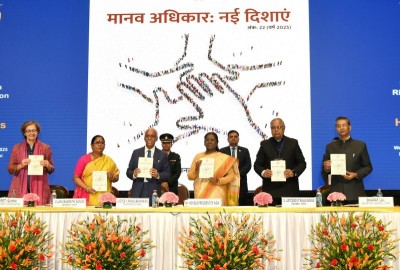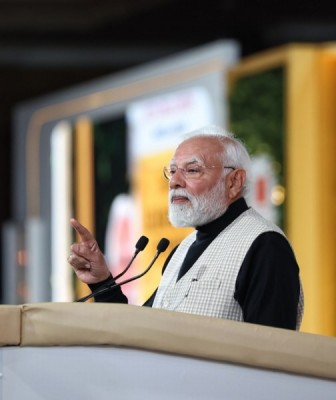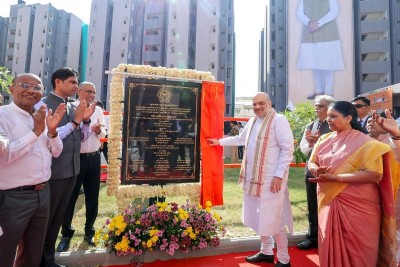
Exacerbating Instability
On November 3, 2015, three UDMF cadres were injured as they clashed with the Police on the premises of Narayani Sub-Regional Hospital in Birgunj town of Parsa District.
Again, on November 4, 2015, 12 UDMF cadres were injured in Birgunj as they clashed with Police at different location in the town.
The clashes between Nepal Police and people agitating to build pressure on the Nepalese Government to meet their demands for amending the new Constitution have been going on since September 20, 2015. According to partial data compiled by theInstitute for Conflict Management, at least 22 such incidents have been recorded from across the country, though they are mainly confined to Terai region. The Terai regionis an area located along Nepal's Southern border with India, and covers 23 per cent of Nepal's total land area of 147,181 square kilometers. Approximately 30 to 40 per cent of the population falls within this region. Out of the country's 75 Districts, 20 are located in the Terai, including, from east to west, Jhapa, Morang, Sunsari, Saptari, Siraha, Dhanusha, Mahottari, Sarlahi, Rautahat, Bara, Parsa, Chitwan, Nawalparasi, Rupandehi, Kapilvastu, Dang, Banke, Bardiya, Kalaiya and Kanchanpur. At least two civilians have been killed in these incidents and another 148, including 140 civilians and eight Security Force (SF) personnel, have been injured (data till November 8, 2015).
This cycle of political violence began on July 1, 2015, when UDMF cadres burnt copies of the preliminary draft of the Constitution in Kathmandu, the Capital city, because it failed to incorporate their demands. At least 46 people including 27 civilians and 19 SF personnel have been killed and another 340 persons, including 273 civilians and 67 SF personnel, have since been injured in violent protests across the region.
17 months after the second Constituent Assembly (CA) election, the preliminary draft of the new Constitution was tabled in the CA on June 30, 2015, paving the way for its promulgation. On August 9, 2015, Nepal's four major parties - Nepali Congress (NC), Communist Party of Nepal-Unified Marxist Leninist (CPN-UML), Unified Communist Party of Nepal-Maoist (UCPN-M) and Madhesi People's Rights Forum-Democratic (MPRF-D) - after the meeting of Constitutional Political Dialogue and Consensus Committee (CPDCC) of the CA reached a landmark deal to divide the country into six provinces. On September 16, 2015, the CA endorsed "Nepal's Constitution" by an overwhelming 88.5 per cent of the 601-member CA, and by over 95 per cent of the Members present and voting. On September 20, in a historical step, Nepal adopted its first democratic Constitution.
While the adoption of the new Constitution was welcomed by most national and international groups and leaders, a large segment of the population, particularly the Madhesis and Tharus, residing in the Terai region contested the new Constitution on the grounds that:
The six province model would perpetuate existing fault-lines that marginalise the Madhesis and other minority communities.
Ethnic communities were aggrieved that, under the new Constitution, a smaller percentage of lawmakers will now be elected by proportional representation - 45 per cent, as compared to 58 per cent under the Interim Constitution.
Some ethnic communities are also unhappy at the proposed boundaries of the new provinces, although these are subject to future amendment. In western Terai, the indigenous Tharus are chafing at the prospect of being split in two and forced to share their provinces with the Hill Districts that have historically dominated the country's politics.
Another controversy relates to the provision in the new Constitution that, if a Nepali woman marries a foreigner their children cannot assume Nepali citizenship unless the man first does so; however, if the father is Nepali, his children would be Nepali regardless of the wife's nationality. The Madhesi communities, ethnically and socially close to Indians just across the border, say the new citizenship measures will disproportionately affect them because there are many cross-border marriages.
Further, on October 27, 2015, the Federal Madhesi Front (FMF), comprising of the Lok Dal, Bahujan Samaj Party Nepal, Nepal Samajbadi Party, Nepal Sadbhawana Party and Loktantrik Party Nepal, presented a 102 point Constitutional amendment proposal to the Government. Among other issues, the Front had sought amendment in the Constitution to include Hindi and English as administrative languages, use 'Madhes' in the national anthem, elect the Prime Minister on a rotation basis and review the federal provinces. The Front also demanded the declaration of those who died during the Terai agitation as martyrs and the provision of financial compensation to their families, as well as provision of medical treatment to those who sustained injuries during demonstrations, and the release of cadres arrested in the course of protests.
India has been prominent among the few countries that have been demanding that the Nepal Government revaluate its decision and attempt to address the grievances of the Terai population. Urging Nepal's leadership to amend sections of the country's new Constitution, India's External Affairs Minister Sushma Swaraj, during a meeting with Nepal's Deputy Prime Minister Kamal Thapa in New Delhi, on October 18, 2015, conveyed a message stressing the need for "broad-based ownership" of the Constitution. Indeed, even as Madhesi protests and violence mounted in August 2015, India's Prime Minister Narendra Modi, ignoring the tremendous efforts that had been exerted over long years to secure some measure of consensus in an extraordinarily fractious polity, had proclaimed, "Five to ten people cannot sit in a room and write the Constitution. All parties and forces should sit together. There must be greater dialogue."
India's gratuitous interference in the Nepalese Constitution writing process, on many assessments driven by the imperatives of the electoral calculus in the Indian State of Bihar, has alienated the establishment in Kathmandu, despite the enormous goodwill generated over the past years, and particularly with the extraordinary aid India provided during the national crisis generated by the devastating earthquake of April 2015. Accusing India of supporting the blockade by Madhesi parties, Nepal's Deputy Prime Minister Bamdev Gautam declared, on September 30, 2015,
Seventy per cent of Nepal's trade is with India and if India imposes a blockade like this, people whose products are not exported will rise in protest against the (Indian) Government. It happened earlier also and then Government had to lift the blockade. Why they did not do it, they would know. But this is wrong conclusion of Indian Government. When India did not welcome (the Constitution), some Madhesi morcha parties - who were protesting earlier - announced that they will enforce a blockade on the border. And in this the Indian Government has provided full cooperation. This has been done to support the Madhesi parties.
Further, accusing India of deliberately imposing a trade embargo, Nepal's Prime Minister K.P. Sharma Oli stated, on November 6, 2015, "Foodstuff and protection come into priority under the humanitarian aspect even during a war. Neighbouring country has further troubled our country by blocking checkpoints while it is still paralysed by the April 25devastating earthquake. This is objectionable."
Indeed, expressing concern over the economic impact of the continuing blockade and protests, the Federation of Nepalese Chambers of Commerce and Industry (FNCCI) in a statement on October 5, 2015, noted that the economy had sustained losses in the amount of NR 100 billion due to the continuing disruption. Similarly, Bikash Bista, Director General of Nepal's Central Bureau of Statistics, on October 30, 2015, estimated that the effect of the blockade was at least close to the economic impact of the April 2015 earthquake and, indeed, was more pervasive and lasting as, unlike the earthquake, the unrest and blockade have hit productive sectors. Damage from the quake was assessed at NR 700 billion under the Post Disaster Needs Assessment.
India has, of course, rejected the allegations of a state backed blockade, even as statements in support of Constitutional amendments for a more 'inclusive' order continue to emanate from high offices. India's Ministry of External Affairs' spokesperson Vikas Swarup on October 1, 2015, argued, "We can only take goods up to the border and beyond the border it is the responsibility of the Nepalese side to ensure that there is adequate safety and security for the trucks to enter that side."
At the height of the blockade, on October 7, 2015, over 5,000 trucks were struck at Indian border points waiting to cross over into Nepal. Referring to the protests by the Madhesi people, Indian ambassador to Nepal, Ranjit Rae on November 1, 2015, observed,
The promulgation of the new Constitution in Nepal after an exercise of 60-70 years was a big achievement for Nepal and India does not prescribe any model. The only concern for India is that the Constitution should be acceptable to all sections and it should not bring instability and threaten peace. India's only concern is that there should be peace, stability and prosperity in Nepal after the promulgation of the Constitution as violence and instability in Nepal will also have similar impact on India as well.
The present protests in the Terai region have aggravated instability in the Himalayan nation.
As critical supplies from India were choked off by the blockade, Nepal turned to China and signed a memorandum of understanding with the China National United Oil Corporation on October 28, 2015. Since then, 71 tankers filled with petroleum products have been brought to Nepal from China till November 8, 2015. Before this, Nepal had relied exclusively on India for its energy needs. India usually sends Nepal about 100,000 tons of fuel every month, including diesel, kerosene and LPG. In 2014, Nepal imported about 1.37 billion liters (360 million gallons) of fuel from Indian Oil Corporation at a cost of USD1.05 billion.
There is little indication of matters settling in the near future. The agitating UDMF has, thus far, held five rounds of talks with the Government Talk's Team. In the first four rounds, held on October 20, October 21, October 25 and October 29, made no headway, but a fifth round held on November 1, saw some positive signs, with the Government and the agitating UDMF agreeing to settle the issue of provincial delineation through broader consensus between the ruling coalition, agitating parties and the opposition, including the main opposition Nepali Congress (NC). However, as Police forcefully evacuated protesters at Birgunj town on November 2, the environment for talks was ruined.
By most assessments, the current protests and blockade are led by discredited forces within the Madhesi parties. However, 58 members of the CA from Terai-based parties refused to endorse the new Constitution on September 16, 2015. Subsequently, one of the agitating parties, the MPRF-D, with 14 CA members, joined the Government on October 11, 2015, after the party signed an eight-point deal with the dominant political formations in the ruling Coalition, the CPN-UML and the UCPN-M to address the demands of Terai-Madhes groups, and agreeing to amend the Constitution to ensure proportional representation in political appointments and public services, as well as to delimit electoral constituencies on the basis of population after ensuring a constituency for each District. Thereafter, on October 11, 2015, MPRF-D Chairman Bijay Kumar Gachhadar, who was once a strong voice against the Government, joined the Government. Gachhadar is Deputy Prime Minister and Minister for Physical Infrastructure and Transport in the current Government led by CPN-UML Chairman KP Sharma Oli.
There are certainly shortcomings in the new Nepali Constitution - as in any other Constitution across the world - and that is what processes of amendment are for. The dominant Madhesi parties in the CA put their signatures on this document in full awareness of its remaining limitations, and with assurances from the majority parties that their concerns, particularly regarding provincial delimitation, would be addressed through the amendment process. The disruptive protests by marginalized Madhesi formations, at least in part encouraged by Indian state actors, have been unfortunate, and have caused enormous loss and distress within Nepal. India's role in these disorders - real and perceived - can only undermine New Delhi's already limited influence within the region.
Support Our Journalism
We cannot do without you.. your contribution supports unbiased journalism
IBNS is not driven by any ism- not wokeism, not racism, not skewed secularism, not hyper right-wing or left liberal ideals, nor by any hardline religious beliefs or hyper nationalism. We want to serve you good old objective news, as they are. We do not judge or preach. We let people decide for themselves. We only try to present factual and well-sourced news.







